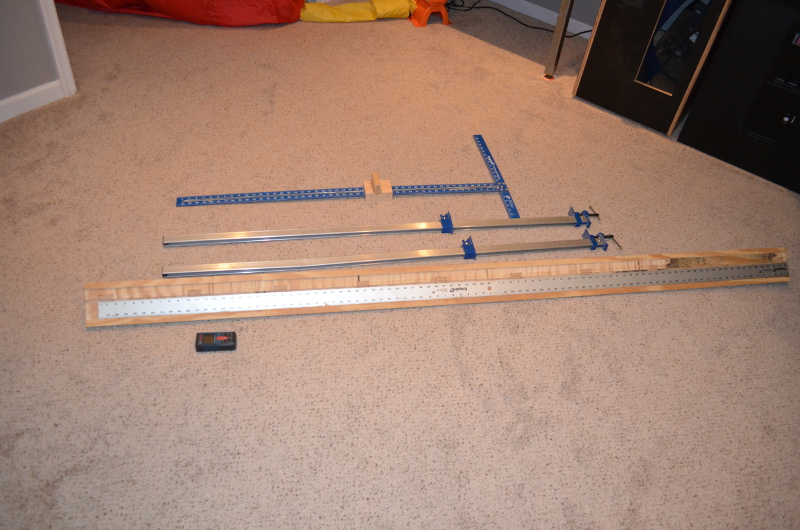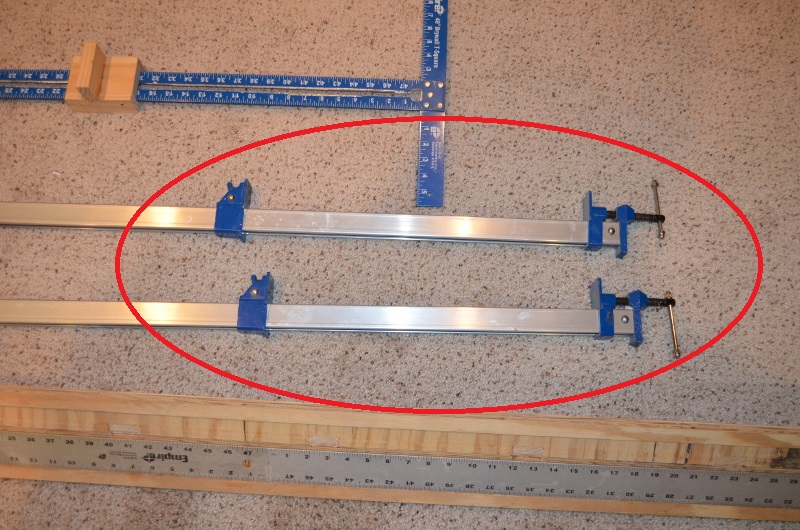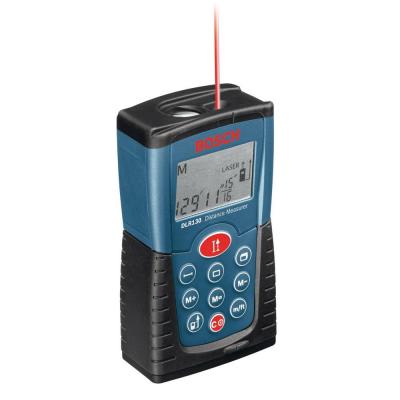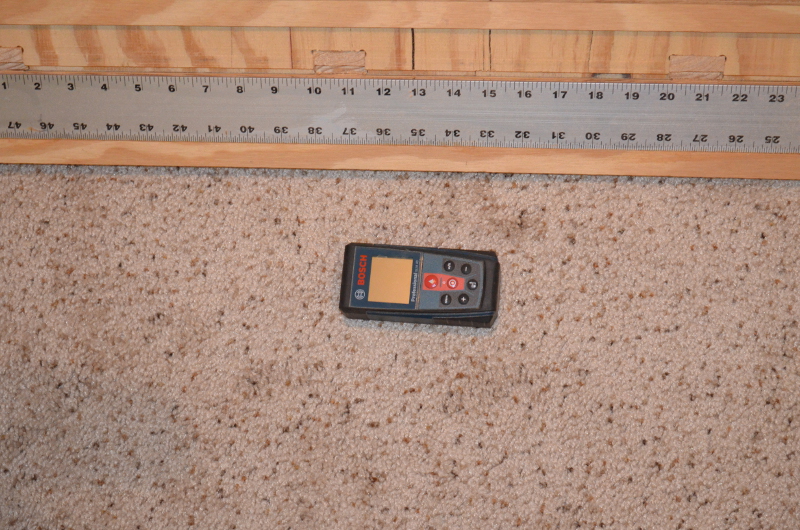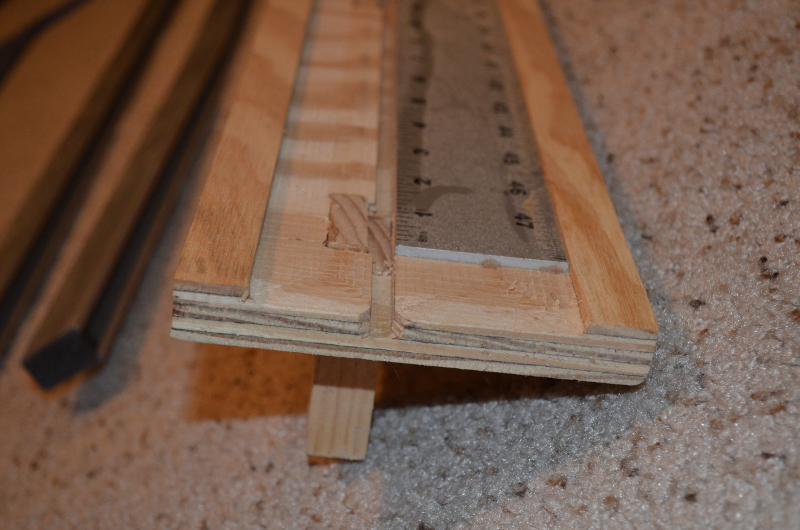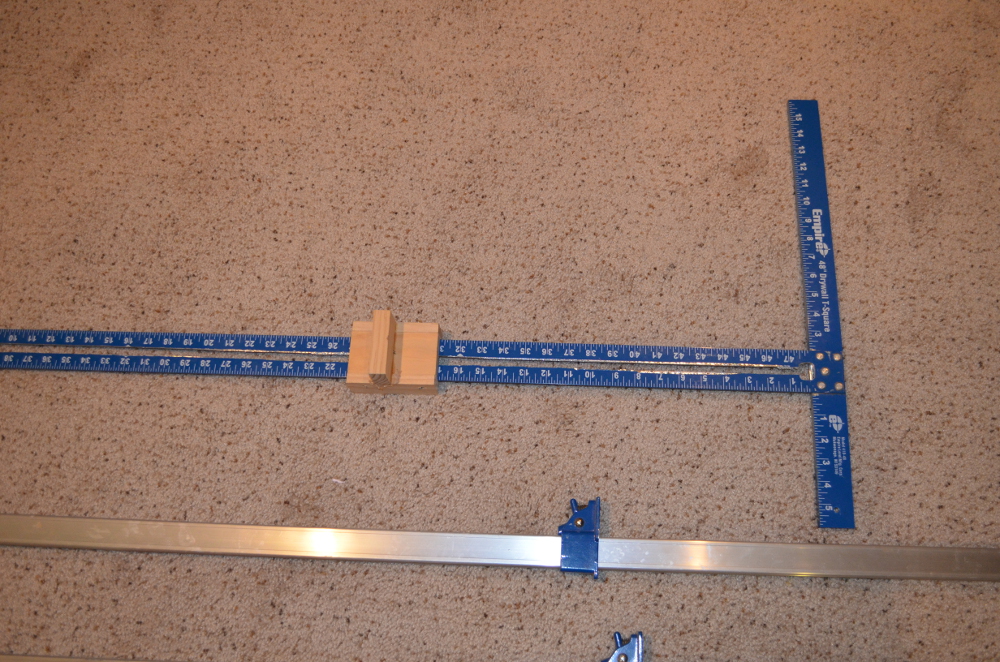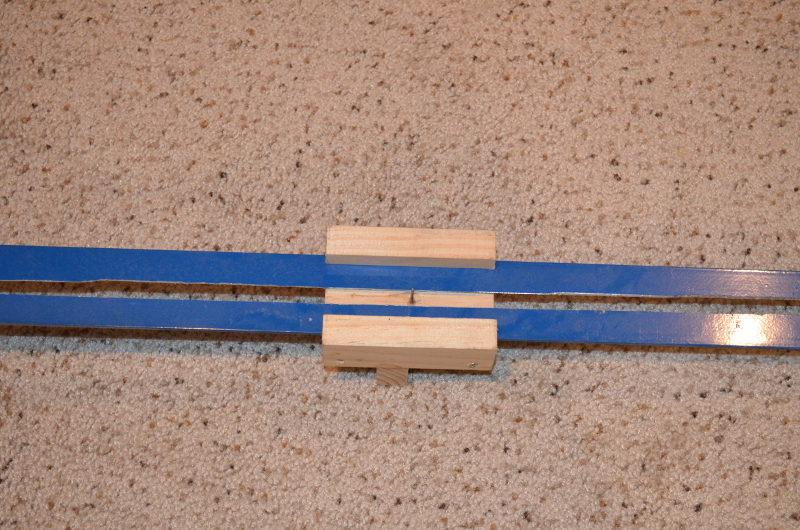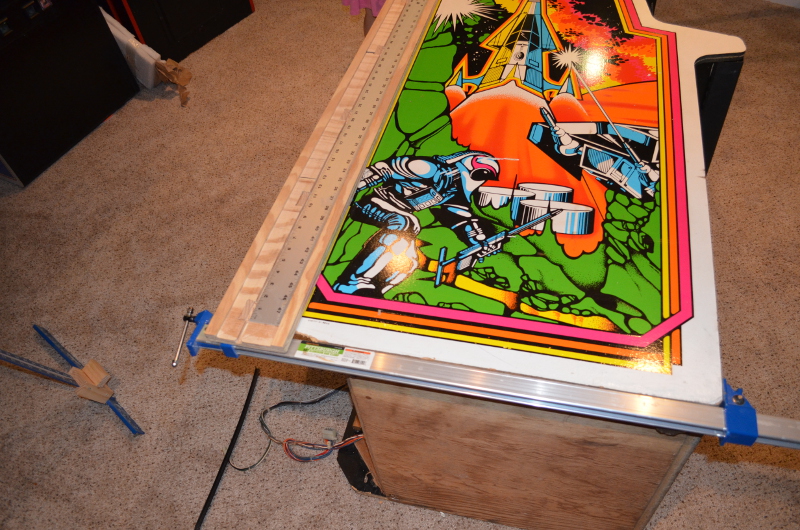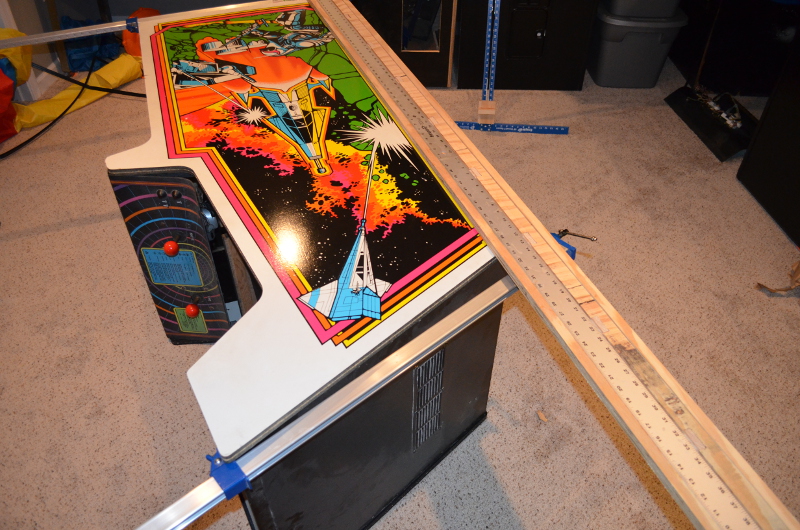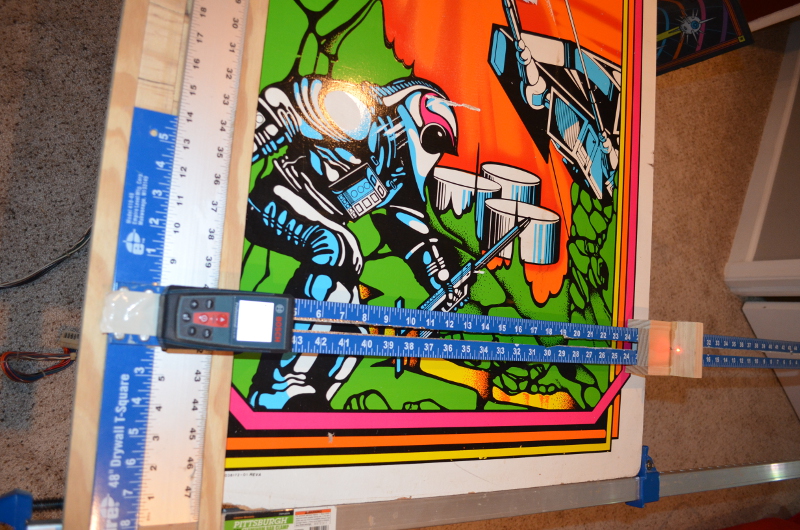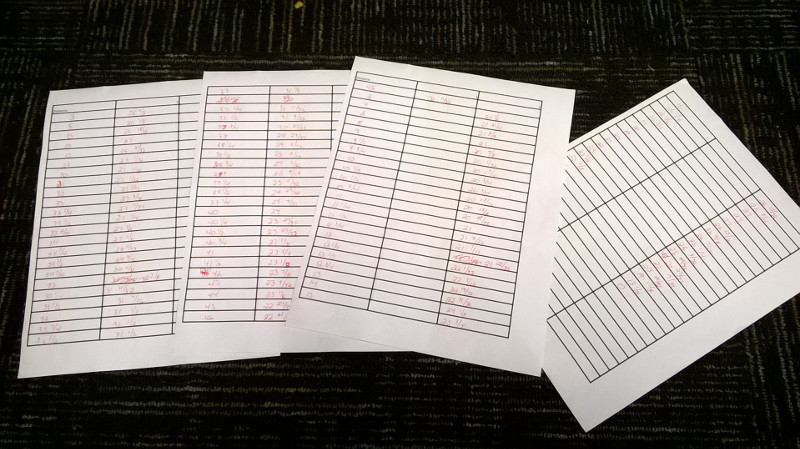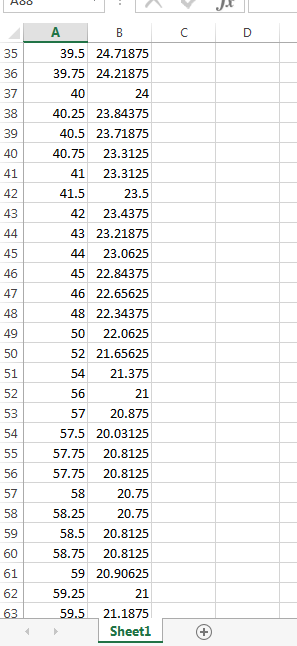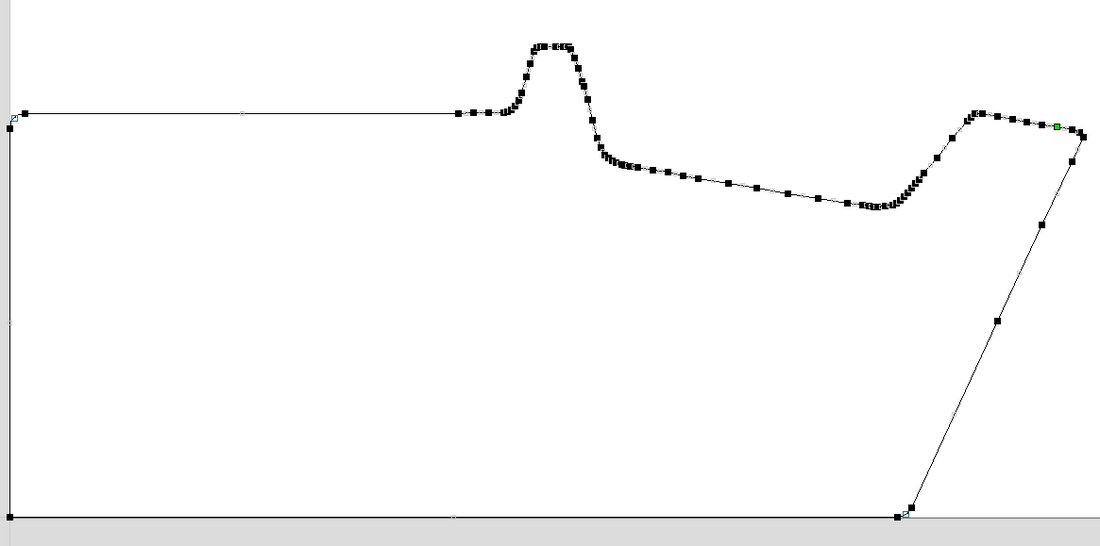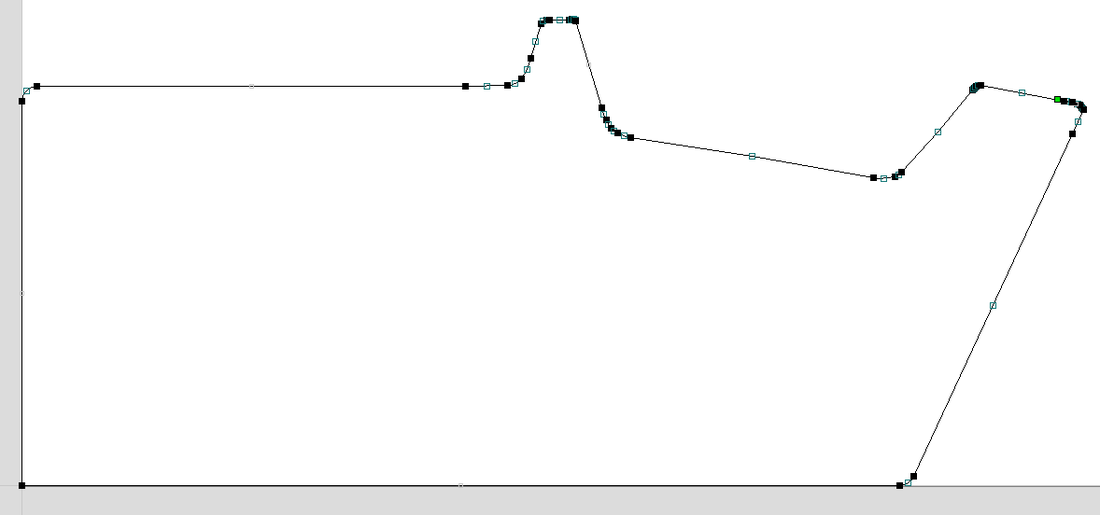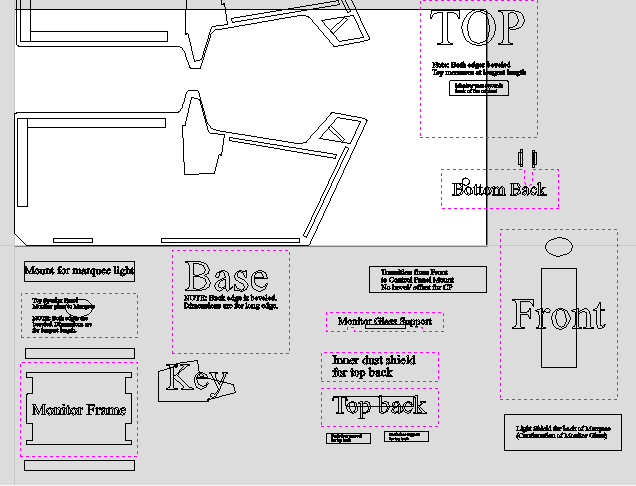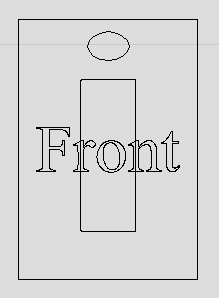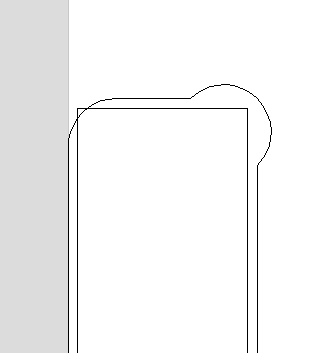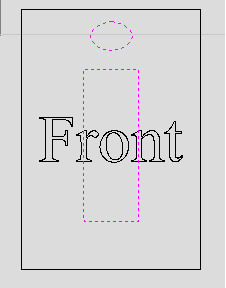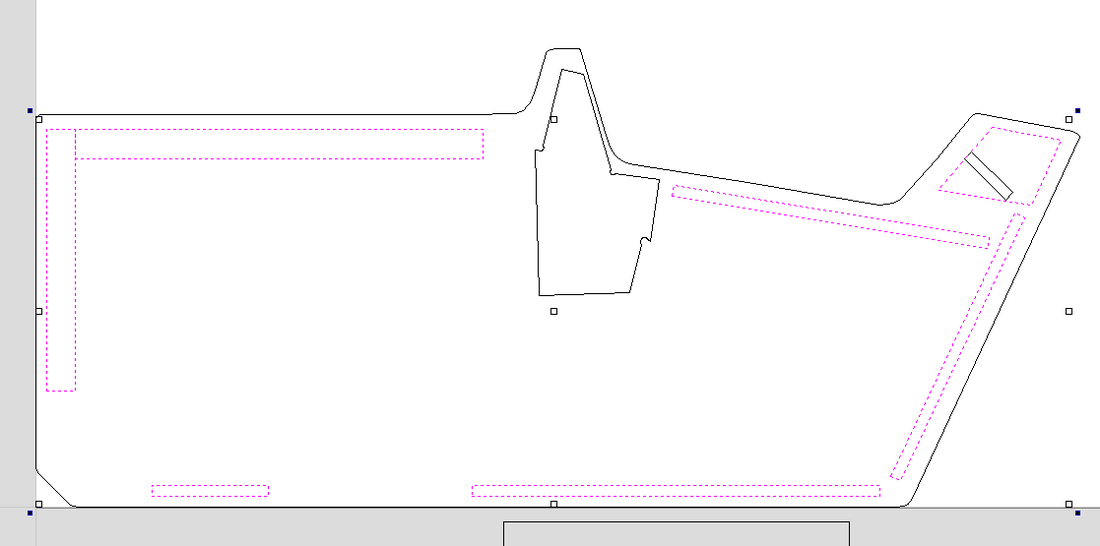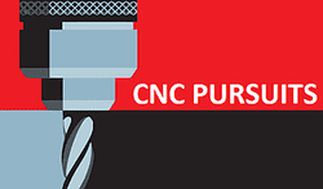Tools For Tracing
Below is a picture of my "kit" I use for tracing cabinets. This has worked out very well for me with respect to tracing cabinets that have a straight back that is perpendicular to the floor. The kit consists of:
1. Bosch laser tape
2. 2x clamps
3. modified straight edge
4. modified T-Square
1. Bosch laser tape
2. 2x clamps
3. modified straight edge
4. modified T-Square
The clamps pictured below are standard 60" F-Style bar clamps purchased from Harbor Freight. They are about $15 each.
Below is one of the best investments I have ever made. The Bosch tape is quick and extremely accurate. Specs on the tape rate it at as accurate to within 1/16" over 100+ feet. I did some testing with mine when I got it and it was dead on every time when under 10'. These are about $80 at your local hardware store.
Below are two pictures of the straight edge. This is simply a piece or plywood with some grooves cut in it for the T-Square to slide along and for the metal tape to recess into. In the profile picture to the right, you will see a metal tape glued down to the plywood, a track for the T-Square to run in, and bottom supports to sit flush against the arcade cabinet. Tolerances have to be tight to allow the T-Square to move while keeping it at exactly 90 degrees to the tape. Additionally, the thickness of the straight edge is 3/4", which lines up nicely with the shuttle on the T-Square.
The last magical part of the "kit" is the T-Square. This is a standard T-Square with a groove cut down the middle of the long axis. I then built a "shuttle" that will move along the long axis. In the bottom side of the shuttle, a 1/16" drill bit s mounted. This drill bit runs against the edge of the arcade machine. On the top side of the shuttle is a block of wood that acts as a target for the laser tape.
Attaching the Jig
Next, you have to mount the straight edge to the back of the arcade cabinet. Lay the cabinet on the cabinet's left side. Remove all of the T-Molding on the right side of the cabinet so you are getting accurate measurements. Attach the straight edge to the back of the cabinet with the two bar clamps. This is much easier with two people. With my jig, it is easier for me to measure the right side of the cabinet since the numbering will start from zero. Now I am basically measuring the cabinet as if tracing it on a piece of graph paper and play connect the dots. My x axis = 0 and my y axis =0 at the bottom back corner of the cabinet. It is very important you get your zero position set correctly on the cabinet.
Measuring the cabinet
With the jig in place, it now becomes fairly simple to measure the cabinet. Simply slide the T-Square along the straight edge, move the shuttle so it is flush against the edge of the cabinet, and hit the button on the laser tape. Rinse and repeat. Typically I take measurements at 1/4" increments during transitions and curves and during straight section I take measurement ever 1-4 inches. When I measure most cabinet sides, I usually have between 80 - 150 points of measurement. This process (once all setup) usually take me about an hour or two with most of my time being spent moving between the jig and writing down the measurements. When I am done, I usually have a few pages of measurements. The bosch measures everything in fractions of a inch. I take these measurements and convert them to decimals (1/4" = .25") so I can easily enter the measurements into the comupter.
Converting cabinet dimensions
I now have a list of measurements taken with the laser tape for the side dimensions of the cabinet. In this case, 86 data points.
All of the measurements taken with the laser tape were in fractions of an inch (1/4, 1/8, 1/16, 1/32, etc...) I need to convert all of these to decimal form so I can enter them into the CNC software. I usually do this in Microsoft Excel and I have a cross reference table to complete this.
All of the measurements taken with the laser tape were in fractions of an inch (1/4, 1/8, 1/16, 1/32, etc...) I need to convert all of these to decimal form so I can enter them into the CNC software. I usually do this in Microsoft Excel and I have a cross reference table to complete this.
Excel file of measurementsWith all of the measurements being made, the next step is to enter the data into the CNC application.
The big question now is what do you do with variations in the measurements and how much do you correct the drawing. Do you use what you think should be the ideal dimensions... or do you use what was actually measured? In the instance of the Gravitar cabinet, the vertical rise from the base of the cabinet to the first bend by the control panel has a variation of 5/32". For the drawings I am making, I usually make these corrections to the cabinets if the variation is less then 1/4" over the long runs. |
Below is a drawing of mapped points.
|
Below is the initial set of drawing points. I already straightened out the points on the vertical rise. I am still missing the back corner of the cabinet in the initial drawings.
|
Below is the cleaned up drawing. NOTE: Still need to add the back corner cutout. The Atari cabinet has lots of straight lines. I "straightened" out some of the areas where the "extra" measurement points to get a cleaner line across the run. Most of the point were within about 1/8" of the straight run across the length of the run. The straight runs were verified with the original cabinet.
|
Measuring the rest of the panels.
From here, I usually start "circling" the cabinet...checking for thickness of materials of all of the components (front, top, speaker panel, etc...), and then measuring everything one component at a time. I check the thickness of the materials first so I can identify any variations. Usually I start with the base of the cabinet. In many cases, the base is constructed of a different material (plywood) then the rest of the cabinet. I can only assume this was done to help improve the strength of the cabinet and resistance to water.
Measuring the external components gets much easier compared to the sides of the cabinet. I usually measure this part next because I need the mental boost.
Measuring the external components gets much easier compared to the sides of the cabinet. I usually measure this part next because I need the mental boost.
|
Tthe case of the Gravitar cabinet, the cabinet is 23 3/4" wide, so all of our measurements will the same for width. All of the panels are rectangles. As a result, you can move fairly quickly through your measurements. All of the areas highlighted are the same width of 23 3/4".
I start by measuring the base of the cabinet. In the case of the Gravitar, the base has 4 holes for feet to be attached and a bevel on the back edge. I simply identify the edge has a bevel and measure the base as the longest length (long side of bevel). I will cut this later with a table saw. While it is possible to measure and designate a degree rating on the bevel, I do not do this. This part will be cut later for best fit when I assemble the cabinet. I often find the factory cut angles are way off and I can get a better fit by cutting it by hand when I assemble. I usually do not add the holes for the feet of the cabinet unless something structurally is going on (like the "skids" on the Rock-Ola cabinets). On most of my builds I add feet that contain a mounting plates. Most of these mounting plates don't line up with the original holes. |
|
Next comes the coin door. In most cases, I try and remove the coin door to get the most accurate measurements. But, in many cases I can also measure the side of the hole from the inside of the cabinet without removing the coin door. While measuring the hole, I take particular note of the shape of the corners of the coin door. Are they rounded, are they square? This will help me draw out the cut pattern for the coin door. The drawing to the left is to help illustrate why this is important. When you cut something with a router / CNC, your are using a round cutting bit. External edges can have sharp corners, but internal edges always have rounded corners. The roundness of the internal corners are dependent upon the diameter of the cutter. The drawing to the left is it illustrate an inner rectangle (coin door), being installed into a hole (front panel of arcade machine). If the coin door has square edges, you have two options... cut a bigger hole or "dog bone" the corners. |
All of the drawings I do are for a 1/4" compression bit. If you are going to be using a larger bit and cut it on the CNC, you will probably have to re-draw some of the cutouts. In most cases, the coin doors have about 3/8" of clearance from the factory, so it is probably an unfounded area of concern....but I would prefer to avoid running into the problem later.
|
The spacing on the coin door hole are re-measured and conformed against the coin door. I place the coin door centered on the front panel and a measured distance from the top. In the case of the Gravitar, I was nearly 1/4" off from left to right from center when measuring the cabinet. I couldn't identify any reason for this, so I corrected this variation in the drawing.
I didn't accurately measure the size of the hole for the speaker. I simply place an oval in the drawing that would be centered on the placement of the speaker grill. In most cases, I would remove the speaker to get a more accurate measurement, but in this situation I didn't have any pop-rivets to re-attach the speaker grill and I was trying to measure the cabinet with as little destruction as possible. NOTE: My Gravitar has bolt holes for securing a lock bar. These holes were not included in the drawings. Additionally, the holes for the speaker grill were also not included in the drawings. Both of these items can easily be drilled after the cabinet is assembled...and will have a better fit and finish over trying to incorporate them into the drawing and being slightly off. I usually do this for all mounting hardware such as speaker grills, Control panels, latches, etc... |
As I continue to work my way around the cabinet, all of the components are standard rectangles. This makes the process simple. Particular attention is placed on beveled edges and cutouts.
Measuring internal structure and assembly guides
Measuring most of the internal structure pieces is usually fairly simple since the majority of the shapes are simple rectangles (with the exception of Gravitar that has the key). I also add cut marks for the placement of blocking or dados to assist in assembly. More on this on the assembly section. I also take a few liberties with the placement of the panels around the edges of the cabinet. In most cases, I only work in 1/8" increments. The primary reason for this is that most plywood (and even particle board) and no standardized thickness. Plywood has been measured between .68" and .74", sometimes in the same sheet. Additionally, in many arcade games that have been sitting for 20+ years, moisture has caused some swelling in the materials. As a result, any accuracy greater then 1/8" can not be expected.
Measuring most of the internal structure pieces is usually fairly simple since the majority of the shapes are simple rectangles (with the exception of Gravitar that has the key). I also add cut marks for the placement of blocking or dados to assist in assembly. More on this on the assembly section. I also take a few liberties with the placement of the panels around the edges of the cabinet. In most cases, I only work in 1/8" increments. The primary reason for this is that most plywood (and even particle board) and no standardized thickness. Plywood has been measured between .68" and .74", sometimes in the same sheet. Additionally, in many arcade games that have been sitting for 20+ years, moisture has caused some swelling in the materials. As a result, any accuracy greater then 1/8" can not be expected.
From the traced edges of the cabinets, I draw in "spacer boxes" (my term...see the picture above). These spacer boxes are used to place the blocking or dados. The spacing boxes are the same thickness as the wood plus the additional spacing from the edge. This allows me to easily space and arrange the blocking. I am running off the assumption that the thickness of the wood is .75". If the new cabinet is being cut in MDF or Melamine, the thickness is .75. If the cabinet is being cut out of plywood, the spacing will be slightly over-sized, but it should not impact assembly.
In the drawing below, the blocking is drawn out. The only modification I made in the blocking was for the front panel / coin door. In the drawings below (for an Atari Quantum), I used a 2" wide blocking for the front panel / coin door. The reason for this is that I intend to attach the front panel with the use of screws cut with a Kreg jig. (http://www.amazon.com/Kreg-K4-Pocket-Hole-System/dp/B001DYFISG/ref=sr_1_10?ie=UTF8&qid=1438947048&sr=8-10&keywords=kreg ). The reason for the screw assembly is that it will allow for the easy application and trimming of the art that goes on the front panel / coin door.
In the drawing below, the blocking is drawn out. The only modification I made in the blocking was for the front panel / coin door. In the drawings below (for an Atari Quantum), I used a 2" wide blocking for the front panel / coin door. The reason for this is that I intend to attach the front panel with the use of screws cut with a Kreg jig. (http://www.amazon.com/Kreg-K4-Pocket-Hole-System/dp/B001DYFISG/ref=sr_1_10?ie=UTF8&qid=1438947048&sr=8-10&keywords=kreg ). The reason for the screw assembly is that it will allow for the easy application and trimming of the art that goes on the front panel / coin door.
If the cabinet is being cut by CNC, you can make a very shallow cut (.1") to mark the position of the of the dados. In most cases, I usually paint the plywood before I make any cuts. The cutting of the blocking / dados is a shallow cut that also removes all of the paint. It then makes it fairly easy to assemble the cabinet. In each of the cuts for the blocking / dados, I initially dry fit all of the blocking for the cabinet. Most of the blocking is cut at .75". I cut strips in the plywood at .75" as well. In most cases, I can rotate the blocking 90 degrees and the thickness of the plywood ( approximate thickness of .72") fits tightly into the cut space (.75"). I sometimes have to use some 80 grit sand paper to get the edges to fit in the cuts for the dados. Once everything dry fits, I put a layer of glue down, place the dados in with a rubber mallet, and secure them in place with staples. If you are using mealmine or MDF, you will have to shrink / enlarge you dado cuts to have everything fit correctly.
Updated 12/3/2016
Updated 12/3/2016
|
|
Special thanks to the contribution by: Chris for the Pac-Man cocktail plans
All graphics/images/cabinet designs on this site are copyrighted by the their original owners. ClassicArcadeCabinets.com makes no claim to said such rights and provides the cabinet designs for collectors and hobbyist of the original arcade coin-op machines. Images and graphics are for reference only. Any copyright holder wanting their images or reproductions removed from this site should contact us and we will immediately remove these images.
SITE LAST UPDATED January 16, 2024
|
